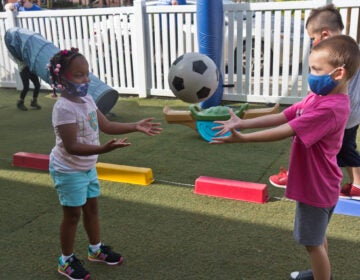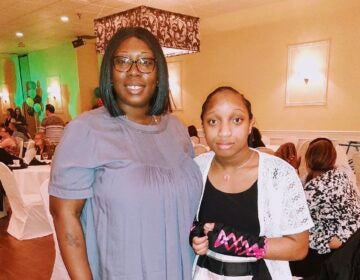For non-swimmers, a chance to jump in the water and learn
A 2017 study found 66% of African-American kids couldn’t swim well enough to be safe in the deep end of a pool. We Can Swim dives in to change that.
Listen 4:41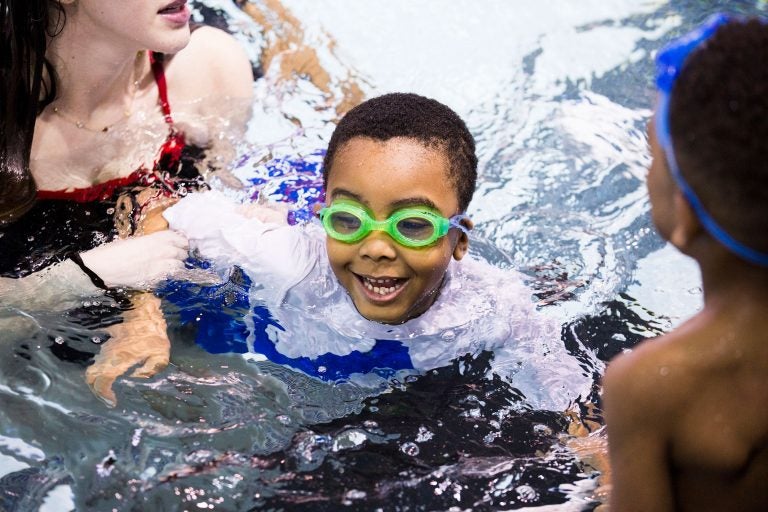
Natalie Edman (left), a freshman at the University of Pennsylvania, gives Quintin Whitner, 6 (center), a swimming lesson through We Can Swim on March 23, 2019. (Rachel Wisniewski for WHYY)
How do we help children thrive and stay healthy in today’s world? Check out our Modern Kids series for more stories.
Lulu Jabbie and her brother Ibrahim bobbed at the edge of a sparkling pool at the University of Pennsylvania, dunking below the surface and blowing bubbles through their noses while they waited their turn to practice the front crawl.
After all six kids in their lane had the chance to work on their strokes, the moment they’d been clamoring for had arrived — the end-of-class race.
One of their instructors, Penn junior David Zhou, counted down and they were off, legs kicking and arms reaching, bodies churning the water as they raced half the length of the pool and back.
Like many siblings, Lulu, 13, and Ibrahim, 11, have a competitive streak.
“He doesn’t want to admit it that I’m faster than him,” Lulu said.
“No, you’re not,” Ibrahim rebutted.
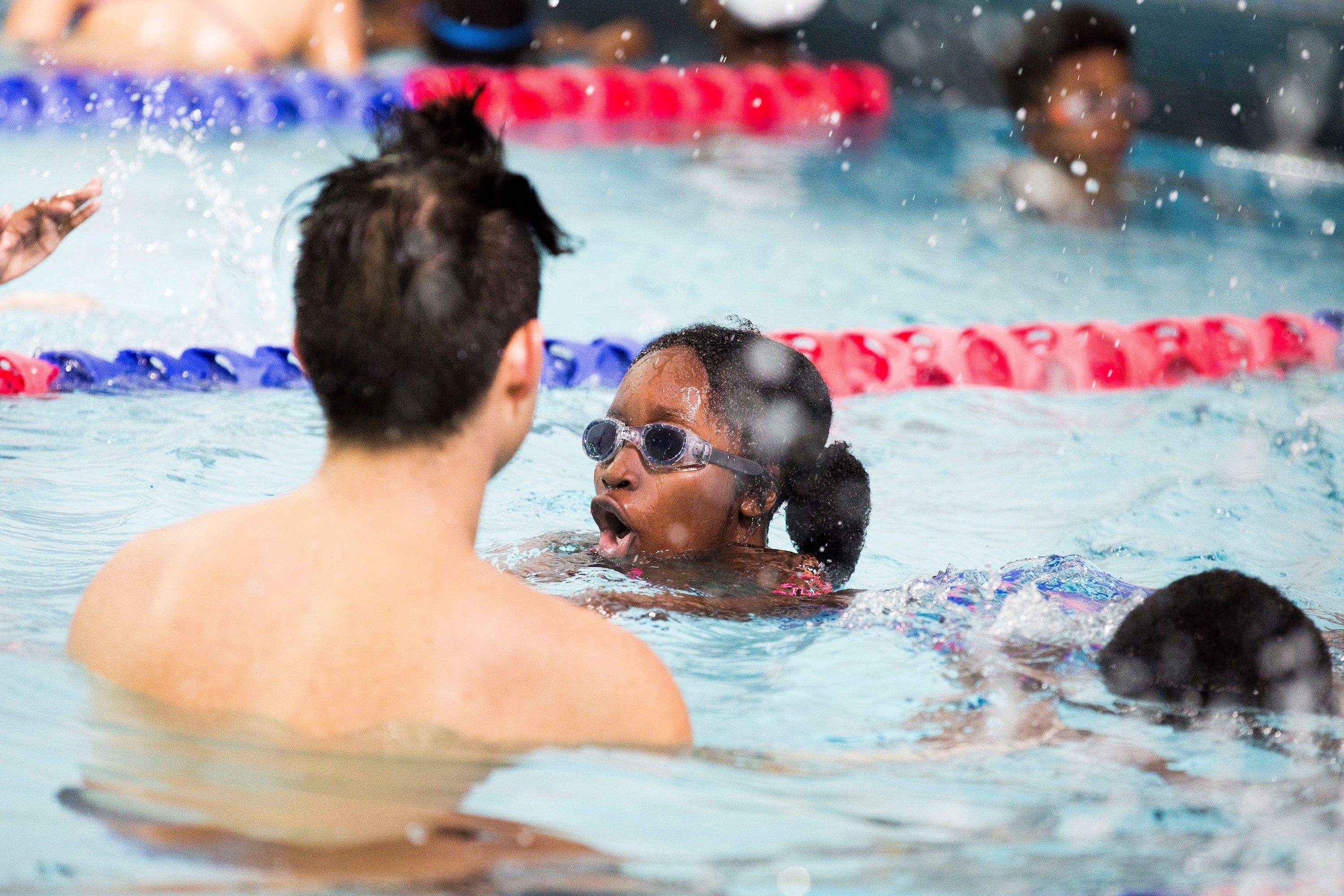
The kids have been coming for three years in a row to a program at Penn called We Can Swim. Run by undergraduate volunteers, it offers free swimming lessons over six Saturdays during the spring to Philadelphia children who might not otherwise have the opportunity to learn.
Lulu and Ibrahim, whose parents emigrated from West Africa, have come a long way since they started their lessons here.
“All we could do was just jump up and down,” Lulu said. “Basically, we didn’t really know how to swim.”
A lot of kids still don’t know how. Philadelphia families will be flocking soon to the Shore and city pools to cool off, but research suggests many children won’t have the skills they need to be safe in the water. African-American children and kids from low-income families are especially likely not to know how to swim, making a fun summer outing a potentially risky activity.
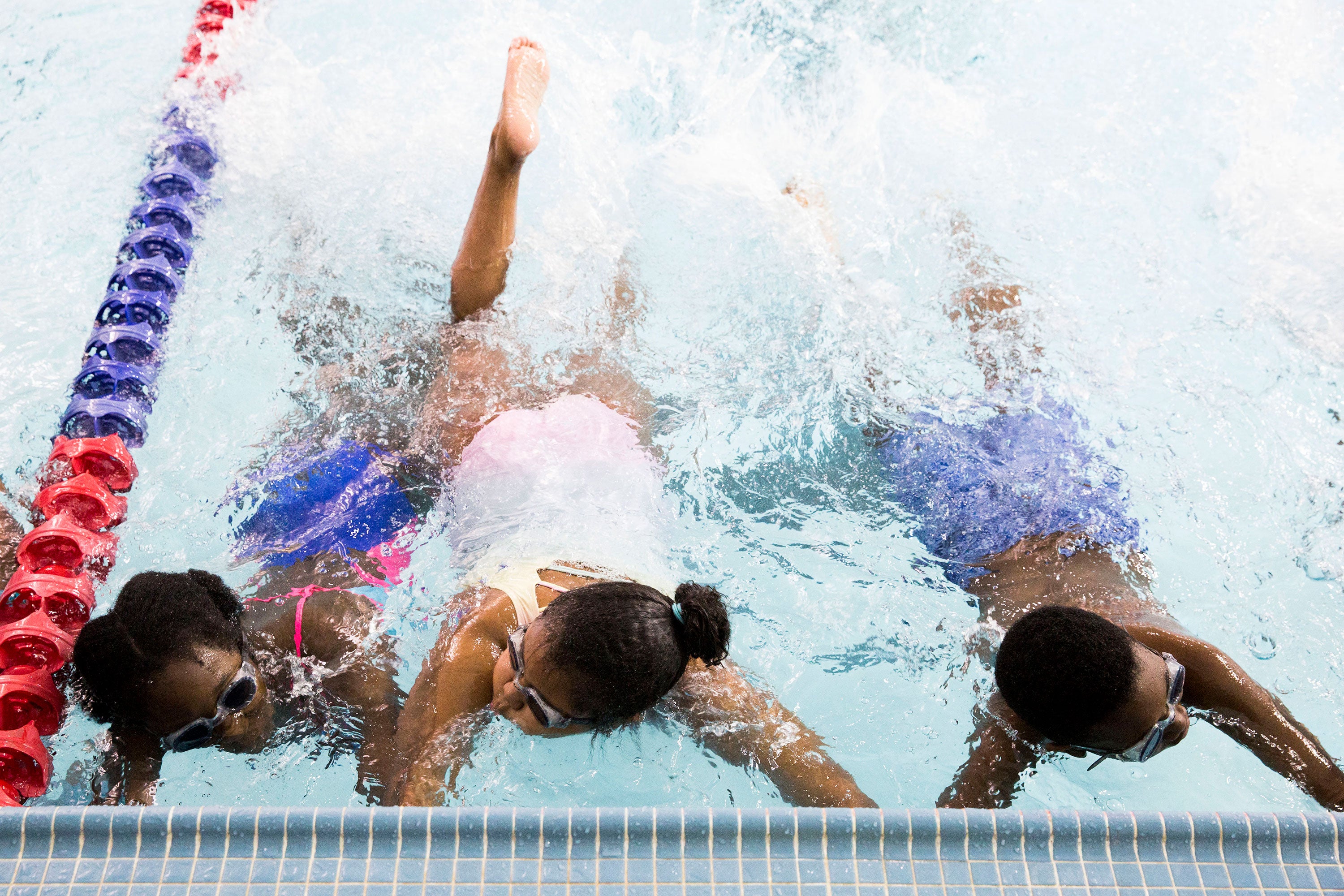
Disparities put kids of color at risk
A 2017 study from the University of Memphis found that 66 percent of African-American kids couldn’t swim well enough to be safe in the deep end of a pool.
“That number is very frightening,” said Carol Irwin, an associate professor at the university and the lead researcher of the study. Her team surveyed parents and teenagers at YMCA recreation centers in five U.S. cities, and found that only 36% of white children lacked the same basic swimming skills.
“So 36% to 66%. That’s a huge disparity,” Irwin said.
According to the Centers for Disease Control and Prevention, black children are almost six times more likely to die from drowning than white children, suggesting that these swimming disparities often have fatal consequences.
Irwin’s research has also looked for reasons why such disparities exist. She’s found that easy access to pools and family incomes that can potentially accommodate swimming lessons are important factors that correlate with better swimming ability.
In focus-group interviews, Irwin said, many black parents also expressed an overriding fear of the water.
“Basically saying, ‘No, I’m not gonna put my kids into swimming because I’m scared they’ll drown.’ ”
Her research hasn’t established where that fear comes from, but Irwin noted that a history of segregation often made swimming an activity open to whites only.
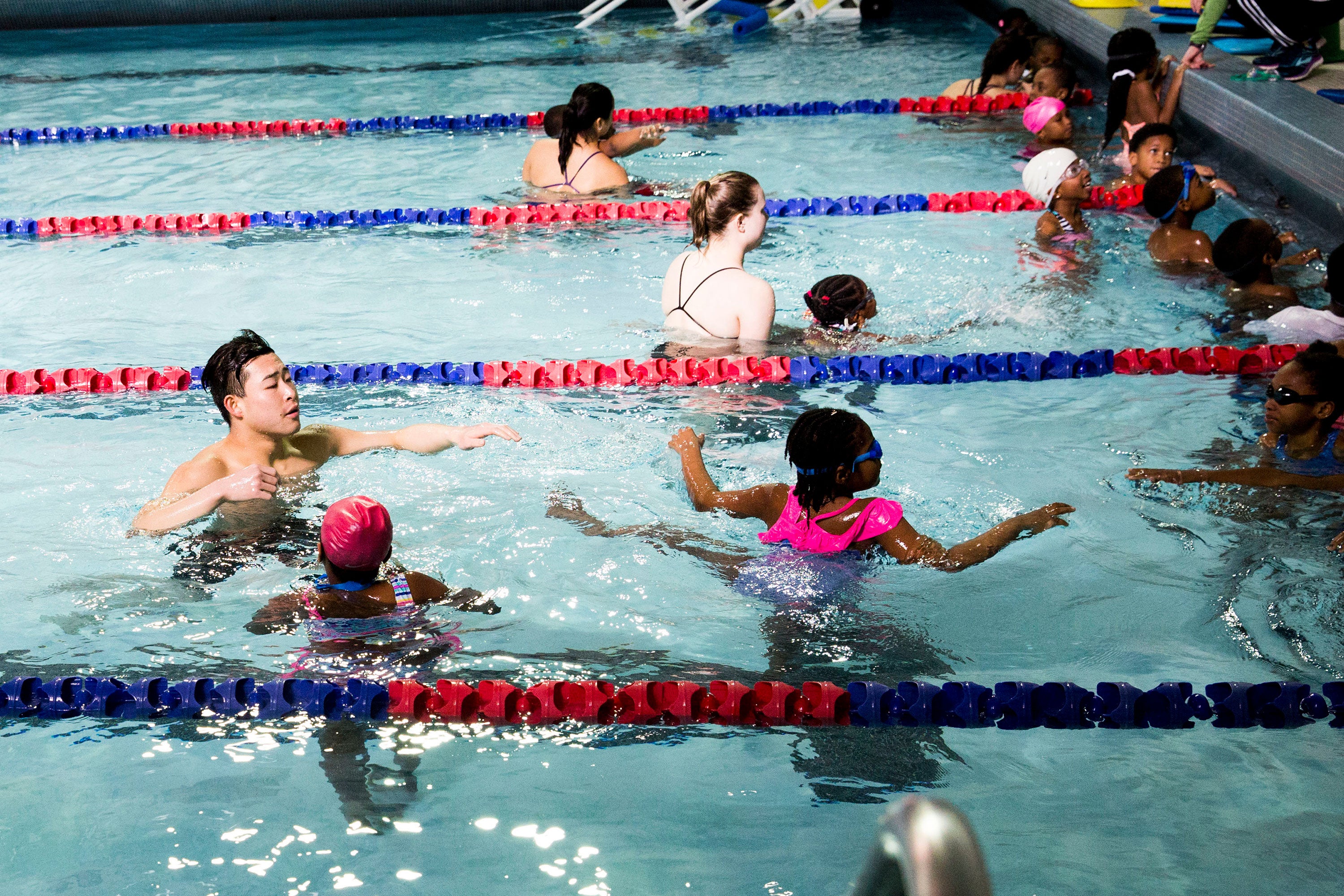
A legacy of segregated swim clubs
Consuella Monk experienced discrimination around swimming pools first-hand.
Growing up in Yeadon, Delaware County, she said, she didn’t have many opportunities to swim. One storied Yeadon swim club, The Nile, was opened by black residents who weren’t allowed to join the other club in town.
But Monk’s family couldn’t afford a membership at the Nile, and she never learned to swim.
“As a child, I had a near-drowning at the beach, and from then on, my mom was like, ‘No, you’re not getting in the water,’ ” she said.
Discrimination at suburban swim clubs continued into 1980s and ’90s, Monk said. As recently as 2009, one Montgomery County swim club was sued for an incident of discrimination against a day-care group from Philadelphia.
In her experience, Monk said, the legacy of segregation persisted in African-American communities.

“I definitely think it has an effect on how likely people are to expose their kids to swimming, learning how to swim, or, if you’re able, being willing to pay for lessons,” she said.
In her case, Monk said, the cost of swimming lessons was prohibitive for her family. Other parents taking their kids to Penn’s We Can Swim program cited the same barrier.
“When you go to look for prices for swimming lessons, they’re really high,” said Sharneice Grove.
There’s a city-run pool in her Northeast Philadelphia neighborhood, Grove said, but she didn’t think it would provide enough opportunities for her 9-year-old daughter to learn how to swim.
“There’s definitely not enough in the city to teach the kids how to swim, and teach them that this can be an enjoyable experience, and not just something that you’re just in the pool splashing around,” she said.
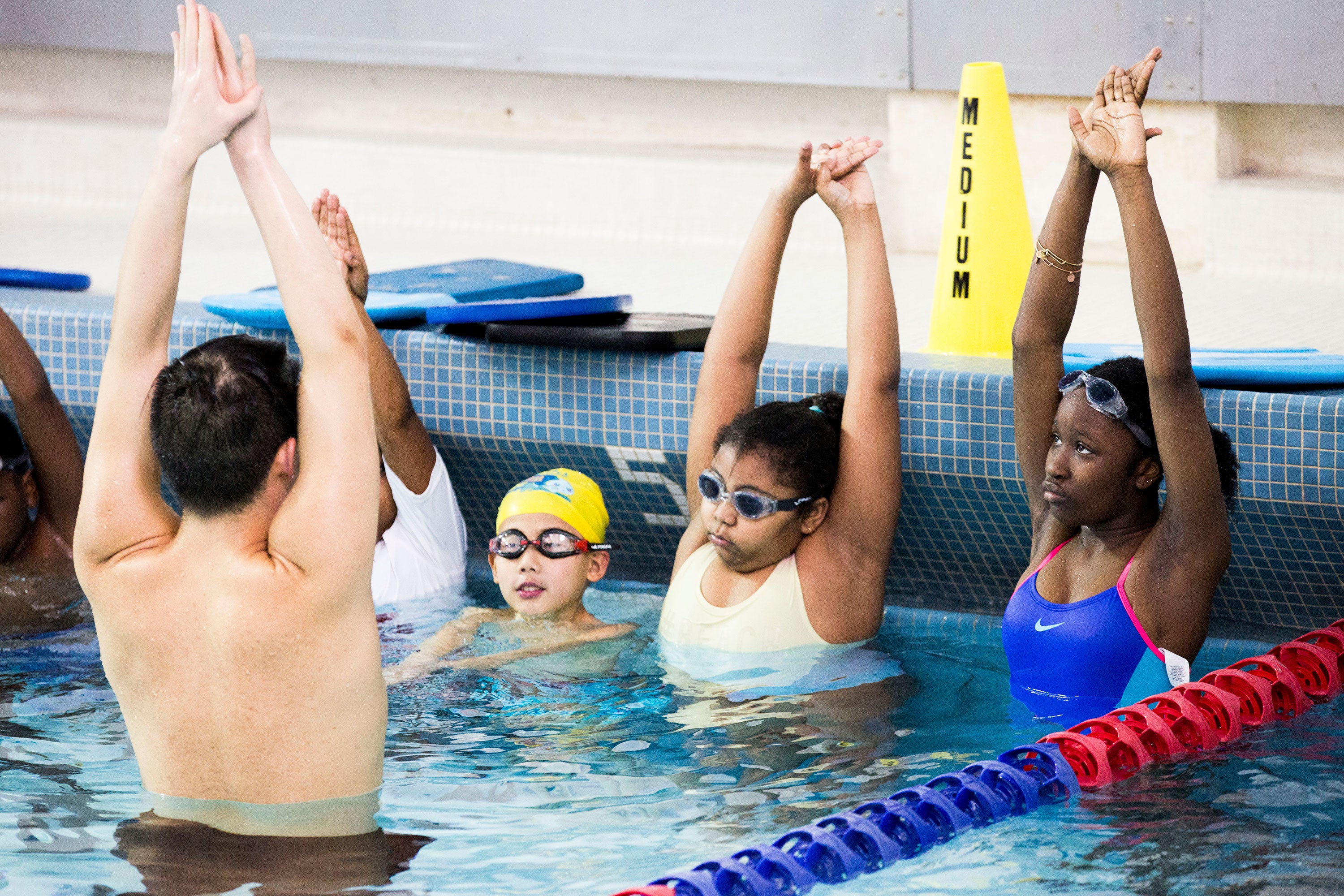
‘We see an area of need’
The Philadelphia Department of Parks and Recreation will open 72 community pools for the summer, and each one will offer free swimming lessons for kids with or without any swimming ability, said Christine Rad, coordinator of aquatics programs. Weekly attendance at lessons last summer was around 11,000, she said.
“We’re in every neighborhood in the city,” Rad said. “It’s important for us in those high-risk neighborhoods that we’re offering programs to help build the skills of the community.”
She added that the Parks Department’s website would provide information on lesson schedules and offerings at each of the city’s pools this year.
But only four of the city’s neighborhood pools remain open year-round, leaving fewer opportunities to build swimming skills in the off-season.
Penn’s We Can Swim program has become so popular, it was able to take only about 200 of the 500 kids who registered this spring.
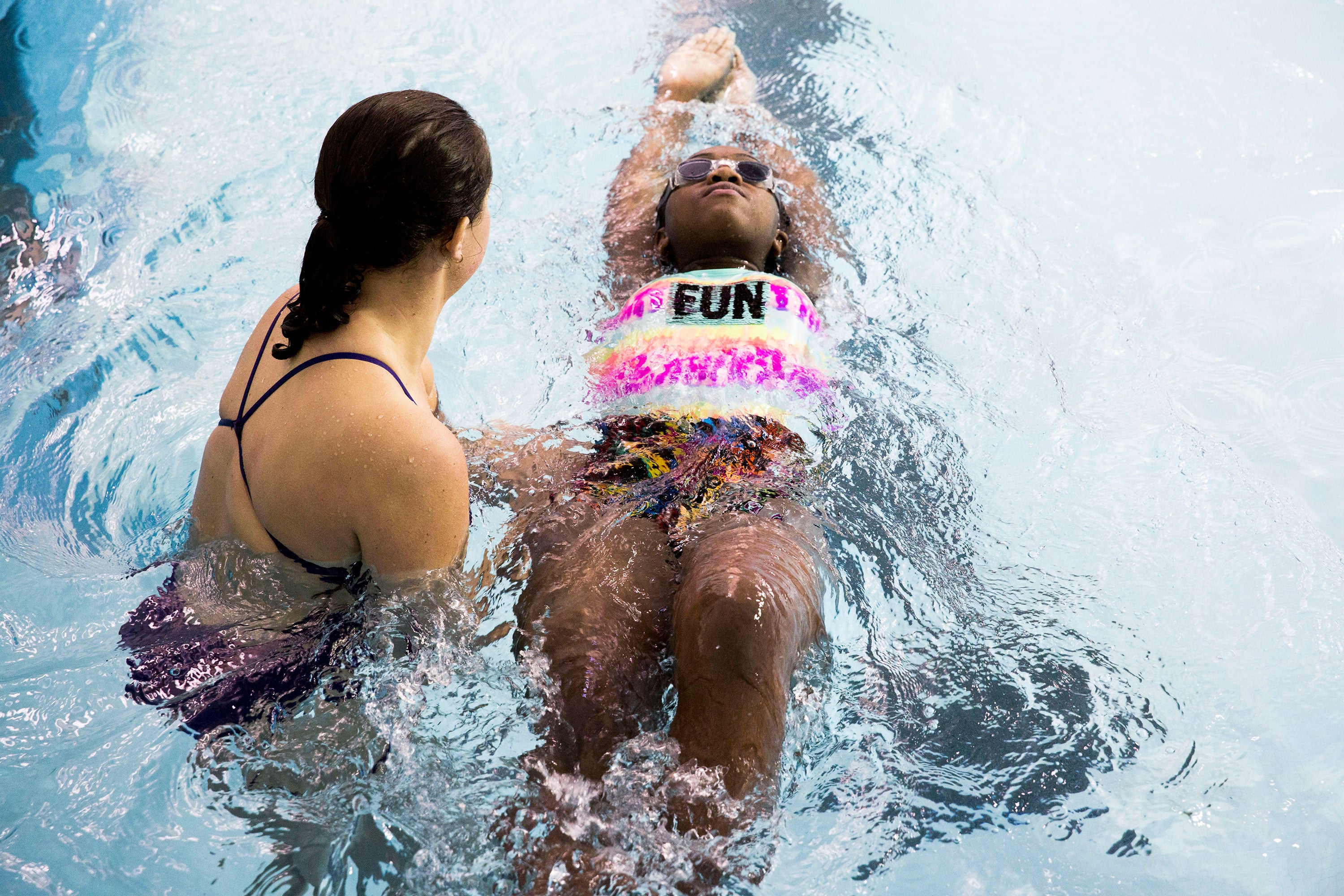
“We see an area of need,” said Benjamin Grau, a senior electrical engineering major and the president of We Can Swim. “Part of the reason I volunteer my time, and I believe a lot of the other people volunteer their time, is because we really do want to make a difference in our community.”
The USA Swimming Foundation has designated the program a “local partner” under its Make a Splash initiative, which promotes water safety and access to swimming lessons through a nationwide network. It provides grants to some local partners to support swimming instruction — Philadelphia’s Germantown Life Enrichment Center received one last year — but Grau said We Can Swim had never been awarded one.
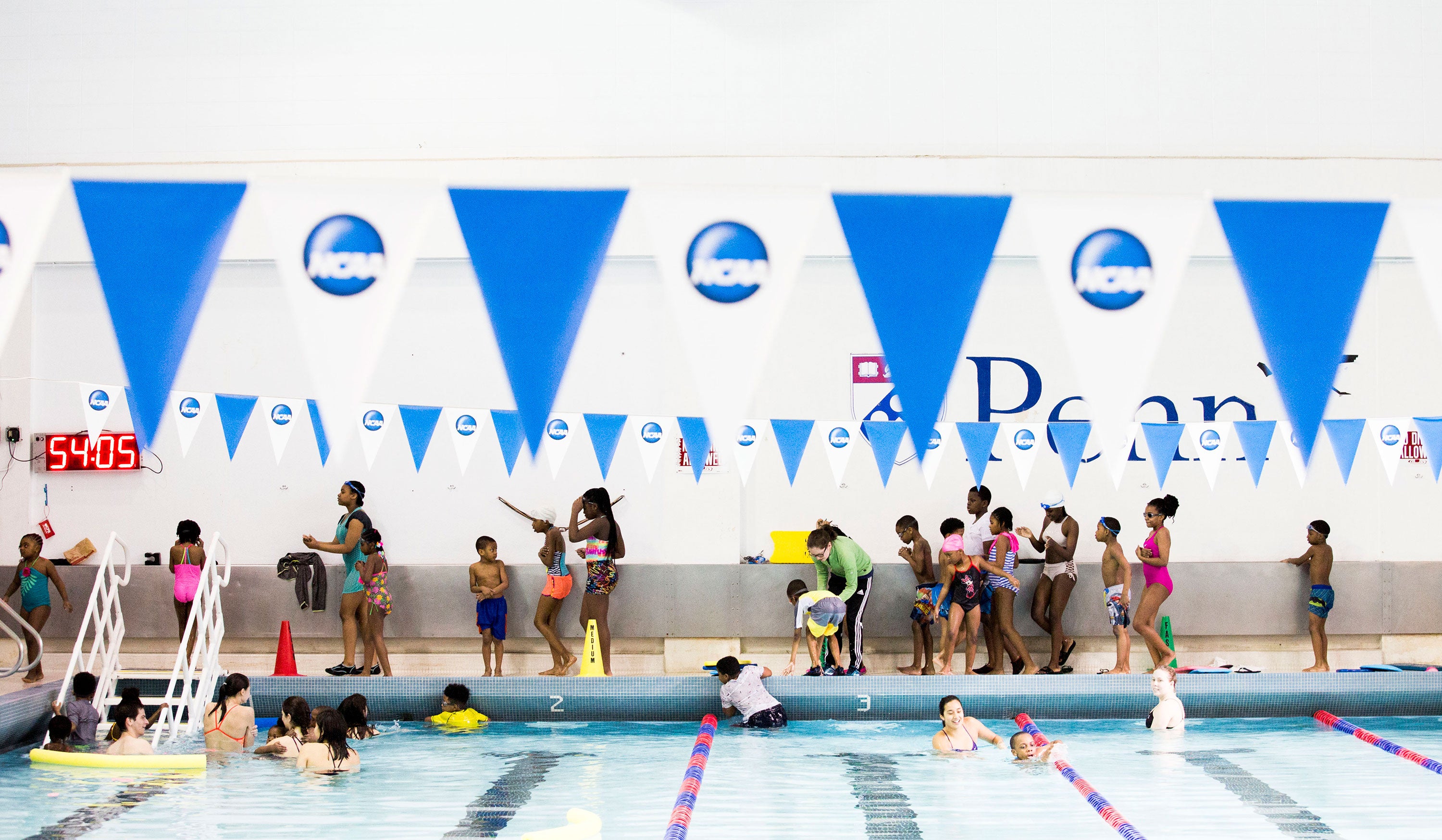
At the last class of this spring’s season, Grau tried to coax Consuella Monk’s 6-year-old son, Joe, down wide steps that sloped gently into the pool.
“How about we get our bellies in like a barracuda?” Grau asked.
Both of Monk’s sons have autism, and Joe is extra-sensitive to the water, she said.
“Me and my husband are just so focused on water safety,” Monk said. “My oldest son is almost swimming, I think because of the program.”
But for now, Joe was just getting his feet wet.
WHYY is your source for fact-based, in-depth journalism and information. As a nonprofit organization, we rely on financial support from readers like you. Please give today.



